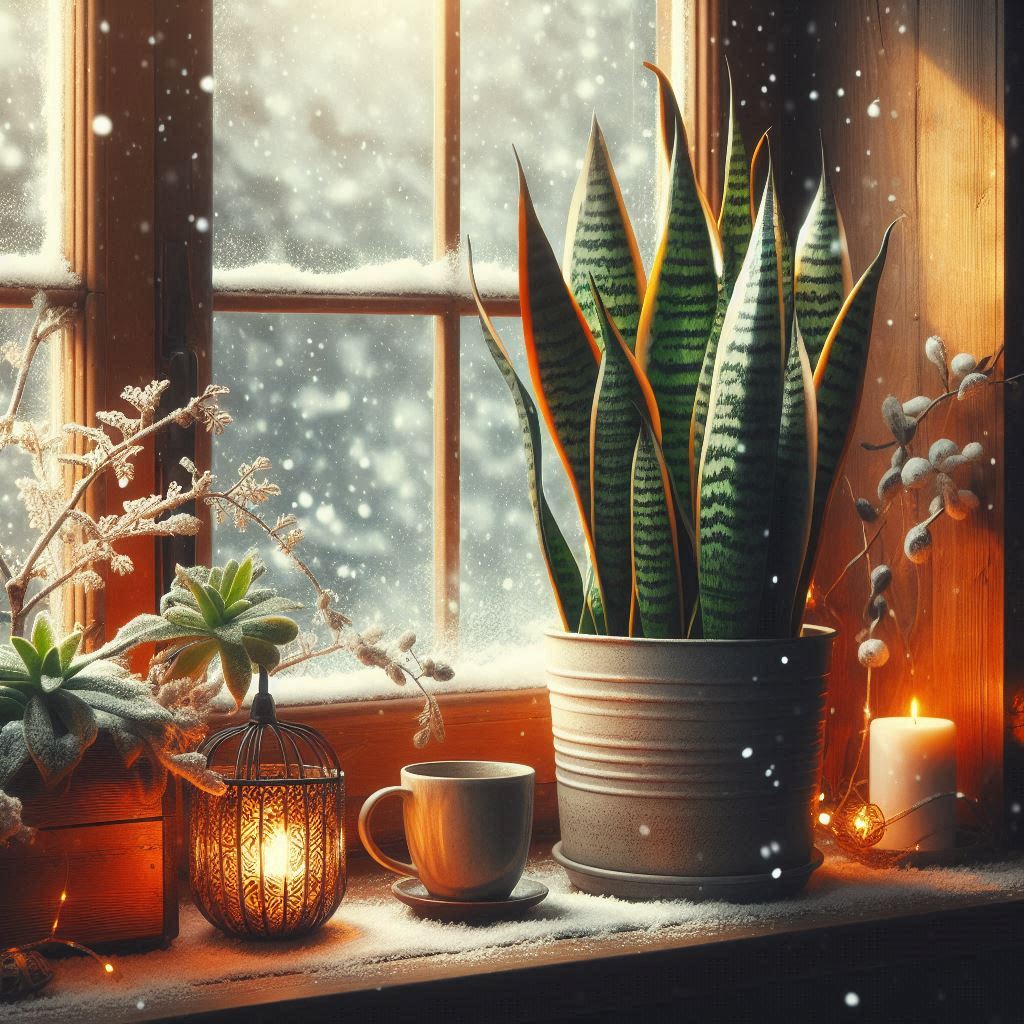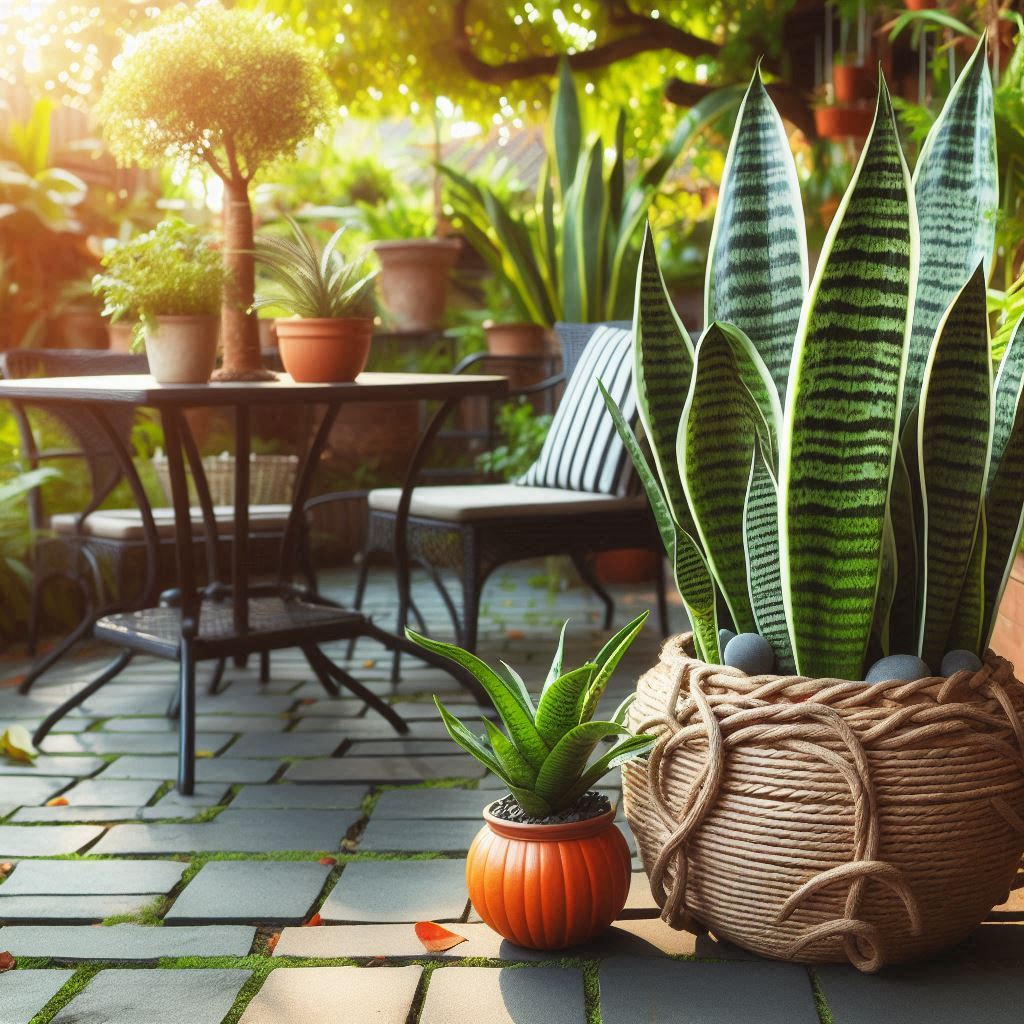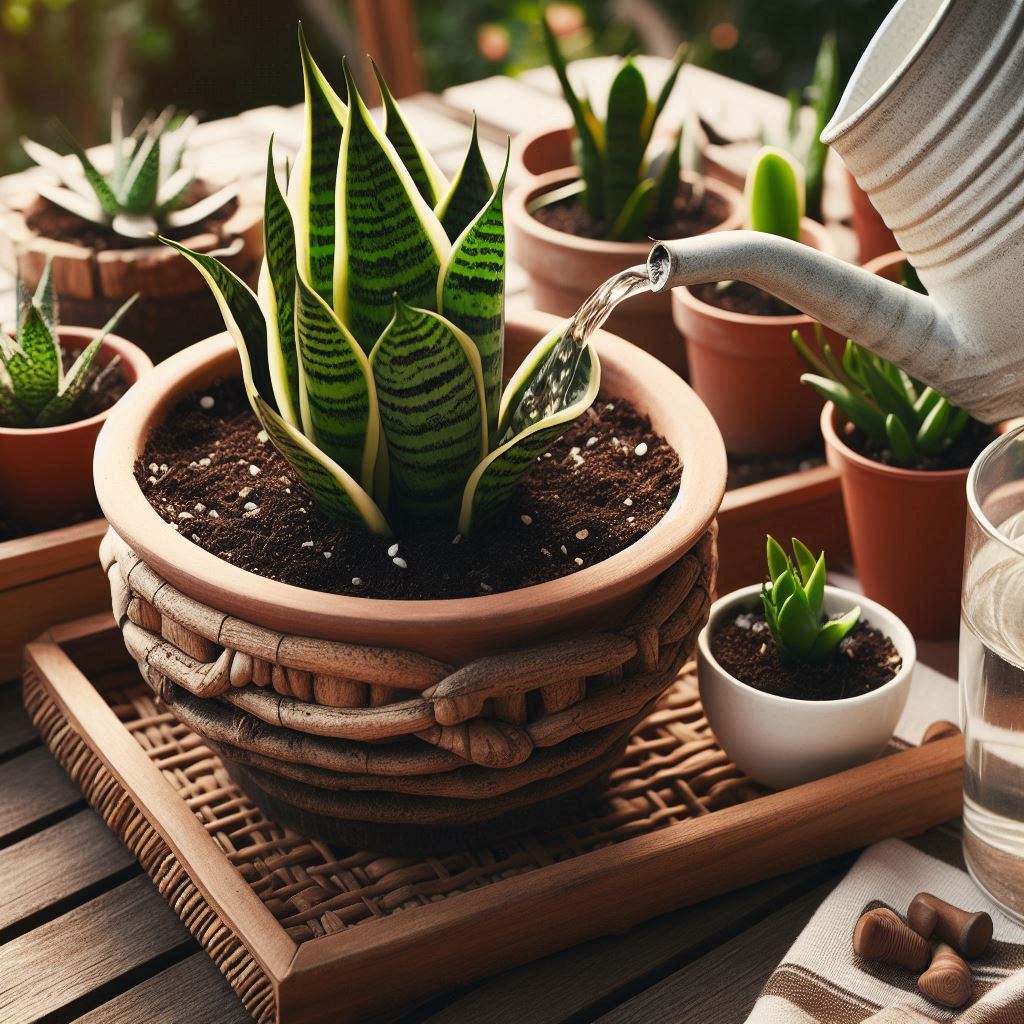Contents
- 1 Do Snake Plants Grow in Winter Outdoors?
- 1.1 Will Snake Plants Survive Outside in Winter?
- 1.2 Why Are Snake Plants Hardy?
- 1.3 How Cold Is Too Cold for Snake Plants?
- 1.4 What To Do In Winter For Outdoor Snake Plants
- 1.5 Are Snake Plants and Winter Indoors Compatible?
- 1.6 Signs Your Snake Plant Is Too Cold
- 1.7 Can You Grow Snake Plants Outdoors Year-Round?
- 1.8 Frequently Asked Questions (FAQs)
- 1.9 Conclusion
Do Snake Plants Grow in Winter Outdoors?

Tips for Taking Care of a Snake Plant During Winter
Snake plants (Sansevieria) are among the toughest houseplants there are. They are notoriously low-maintenance and adaptable, and for that reason they are popular with novice gardeners and farmers as well as the pros. But if you live where winters run cold, you might be asking: Can snake plants be outdoors during winter?
This article will show you the responses you seek. We’ll go over whether snake plants can survive winter outdoors, and how to care for them in the cold months, with tips to keep them healthy. Also read our Outdoor Decoration.
Will Snake Plants Survive Outside in Winter?

The short answer: it depends. Snake plants come from tropical regions where temperatures are warm year-round. They are not cold-hardy plants, so freezing temperatures will kill them. In fact, snake plants can be damaged if they encounter temperatures less than 50° F (10° C). So if you’re somewhere that has cold winters, it’s probably not going to be that your snake plant grows nicely outdoors in the winter time. Learn more about The Full Guide Of How Much Does it Cost to Paint Kitchen Cabinets.
Yet if you reside in a mild climate in which temperatures hardly ever dip below 50 degrees Fahrenheit, you may be able to leave your snake plant outside in the winter, just be sure to bring it indoors if frost threatens.
Why Are Snake Plants Hardy?
Snake plants are some of your most hardy, adaptable plants. They’re tolerant of a variety of conditions, from drought to low light. This is the reason why they are often kept indoors as houseplants. But though they can endure many elements, they’re not invincible when it comes to extreme cold.
Snake plants have thick, fleshy leaves that store water, enabling them to survive dry periods. They can also survive in dimmer lighting, which makes these perfect for flats without much natural light. But when it comes to cold weather, even the hardiest snake plants have a breaking point. Be sure to check out our 25 Bedroom Wallpaper Ideas.
How Cold Is Too Cold for Snake Plants?

Snake plants are hardy, flexible and are therefore popular houseplants. Their thick, fleshy leaves retain water for dry periods. They also thrive in low-light conditions, so they’re ideal for homes that don’t get tons of sunlight. These traits allow snake plants to tolerate an array of environments. But when it comes to all that cold, even the hardiest snake plant can only take so much. Though they’re made to be hardy, exposure to freezing temperatures can harm them. If you’re in a wintery area, it’s best to keep your snake plant inside for the winter (they’re not cold-hardy and won’t make it through freezes in outdoor conditions).
What To Do In Winter For Outdoor Snake Plants
In a mild climate, if you’d like to keep your snake plant outdoors during winter, there are a few precautions you’ll need to take. Here are a few tips to get your snake plant through the winter:
1. Choose the Right Spot
Choose a spot that receives lots of indirect light, and is protected from wind. It would be best to have a patio or balcony with a bit of cover from the elements. Don’t keep your snake plant in full exposure to sunlight because it burns the leaves in the cold.
2. Drag in the When It’s freezing
Bring your snake plant inside if the temperature drops below 50°F. Better safe than sorry. A frost blanket, or a cold frame, will also protect it, if you’re not bringing it inside each time it gets cold.
3. Avoid Overwatering
During the winter, snake plants need less water. Overwatering would cause the plant root to rot, particularly plain, when the weather is cooler and this plant is outside. Suppose living plants sound like too much of a commitment. In that case, you can get stubby interpretations of the plant in terrariums — representations of the snake plant (officially known as sansevieria) that have little, if any, care instructions, beyond watering only when the top inch or two is dry. Be sure the pot has good drainage at all times.
4. Protect from Frost
Even if the temperature doesn’t dip below freezing, frost can damage your snake plant. Cover it with a frost cover or blanket on cold nights. The safest option if extreme temperature fluctuations are on the horizon is to bring your plant indoors.
Are Snake Plants and Winter Indoors Compatible?

If you live in an area where winters get harsh, better to bring your snake plant inside for the season. Snake plants are excellent indoor plants because they do not require much light and can survive dry air.
1. Indoor Care Tips
Indoors, snake plants require a little more care. Let them live in a place where they’ll receive indirect light, like in proximity to a window with no direct sun. Don’t sweat it too much if the light is low—snake plants can live in low-light situations.
2. Watch for Overwatering
“Snake plants indoors during the winter need even less water than summer,” she said. Indoor temperatures are cooler, so they take longer to grow, meaning you may not have to water as often. Just make sure to let the soil dry out before watering again!
3. Avoid Cold Drafts
Avoid placing your snake plant in cold drafts or direct line with heating vents. Harsh temperature fluctuations — hot air from a heater or cold air from a drafty window could stress the plant.
Signs Your Snake Plant Is Too Cold
If your snake plant has been subjected to temperatures below 50°F for too long you may see some signs of distress. Look out for the following:
- Droopy (or wilted) leaves: Cold temps can really make the leaves soft and flaccid.
- Leaf tarts: The leaves will also become frail and lose leaf tarts — a common symptom of frost damage.
- Leaf rot: A cold and wet environment may cause root or leaf rot.
If you see these signs, it’s a good idea to bring your plant inside and inspect its roots and leaves for damage.
Can You Grow Snake Plants Outdoors Year-Round?
In most cases, snake plants are best kept indoors throughout the winter months. If you live somewhere with consistently mild winters (USDA hardiness zones 9-11), you can leave your snake plant outside year-round. Yet, even these areas need some protection during the colder months.
For area (zones 4-8) weather it would be desirable to grow your snake plant indoors throughout the winter and place it outside through the hotter months. As long as it has plenty of light and warmth and is safe from frost, the plant will flourish in spring and summer.
Frequently Asked Questions (FAQs)
Are snake plants cold-hardy, can they tolerate winter outdoors?
If you live where temperatures remain above 50°F, you may be able to sustain your snake plant outdoors. But if you’re in a colder climate, you’d want to bring it in so freezing temps and frost wouldn’t damage it.
How do I shield my snake plant from frost?
A frost cover or blanket can be used to protect your snake plant from frost. You are old enough to keep a plant inside if the temperature falls below a certain point. If there’s a chance of frost, don’t leave it out overnight.
What’s the ideal temperature for snake plants?
Snake plants prefer temperatures ranging from 50°F to 85°F. Anything below 50°F can damage them, and exposure to frost can kill them.
How often to water snake plants in winter?
In winter, snake plants require less water. Water them only when the top inch or two of the soil is dry. Do not overwater, the plant is dormant during the cold months.
Can I plant snake plants in the ground outdoors?
Snake plants can be grown outdoors in the ground year-round in USDA hardiness zones 9–11. In cooler zones, they need to be containerized and brought in for the winter.
Conclusion
Snake plants are some of the toughest resilience warriors, but they do have their cold limits. If you live in a milder part of the world, you may be able to keep your snake plant outside but do ensure you shelter them from freezing temperatures and frost. For those of you in cold climates, it’s a good idea to bring your plant indoors for the winter.
With a little love, your snake plant can thrive all year round indoors or out. Using the winter care tips from this article, you can help your plant stay healthy and strong during even the coldest months.


